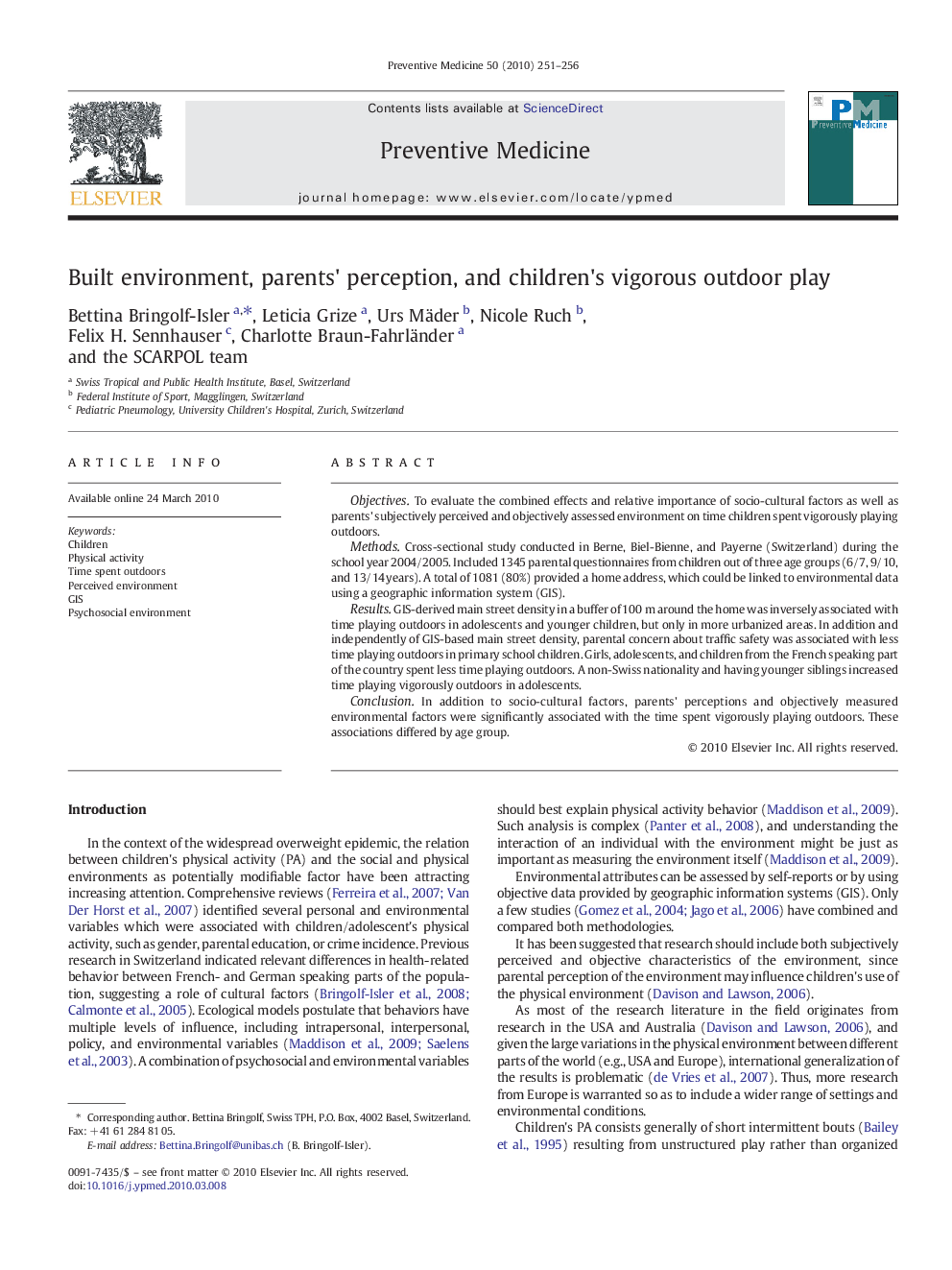| Article ID | Journal | Published Year | Pages | File Type |
|---|---|---|---|---|
| 3101052 | Preventive Medicine | 2010 | 6 Pages |
ObjectivesTo evaluate the combined effects and relative importance of socio-cultural factors as well as parents' subjectively perceived and objectively assessed environment on time children spent vigorously playing outdoors.MethodsCross-sectional study conducted in Berne, Biel-Bienne, and Payerne (Switzerland) during the school year 2004/2005. Included 1345 parental questionnaires from children out of three age groups (6/7, 9/10, and 13/14 years). A total of 1081 (80%) provided a home address, which could be linked to environmental data using a geographic information system (GIS).ResultsGIS-derived main street density in a buffer of 100 m around the home was inversely associated with time playing outdoors in adolescents and younger children, but only in more urbanized areas. In addition and independently of GIS-based main street density, parental concern about traffic safety was associated with less time playing outdoors in primary school children. Girls, adolescents, and children from the French speaking part of the country spent less time playing outdoors. A non-Swiss nationality and having younger siblings increased time playing vigorously outdoors in adolescents.ConclusionIn addition to socio-cultural factors, parents' perceptions and objectively measured environmental factors were significantly associated with the time spent vigorously playing outdoors. These associations differed by age group.
